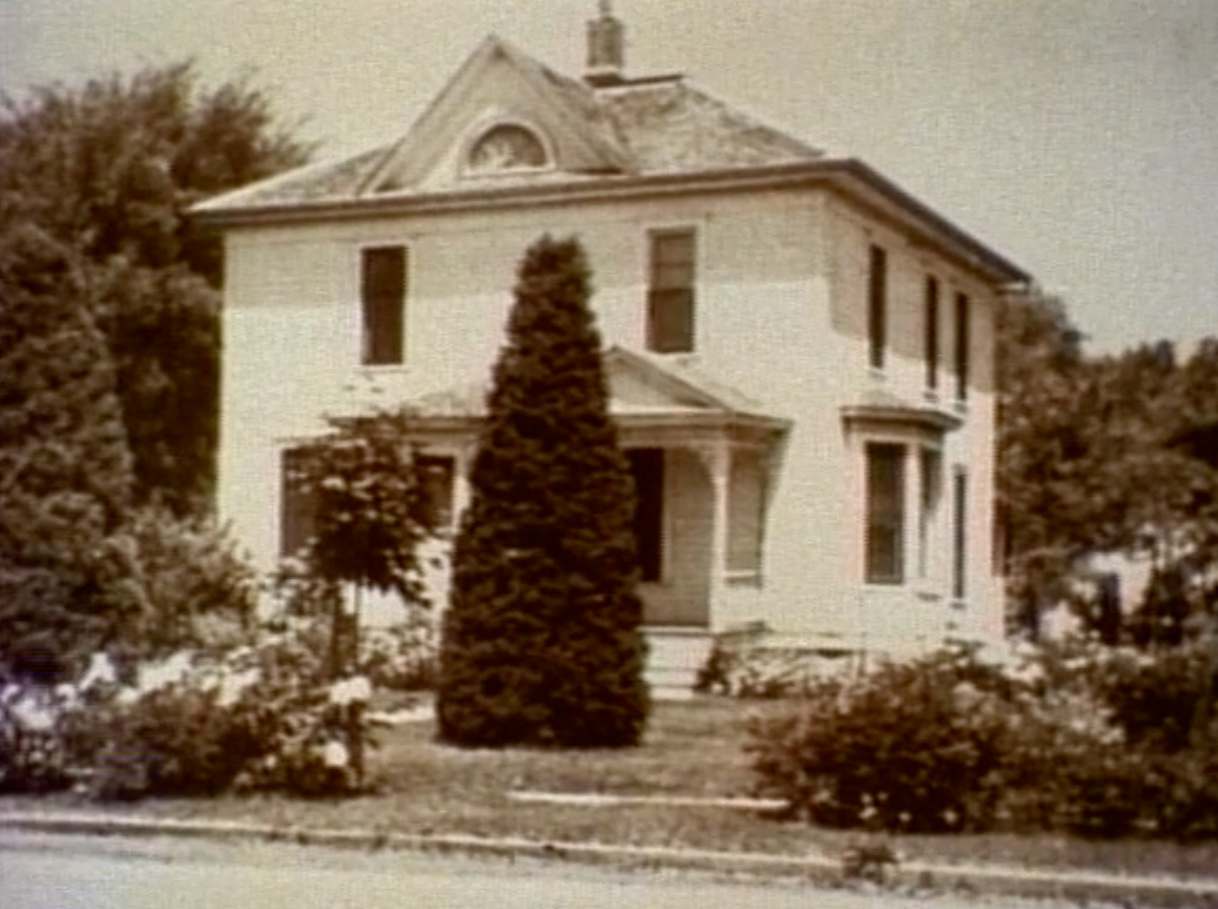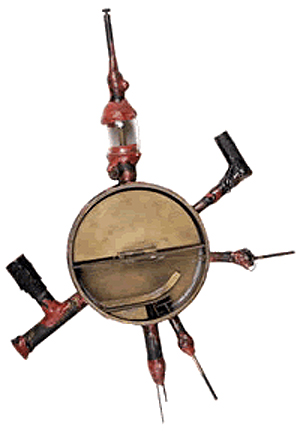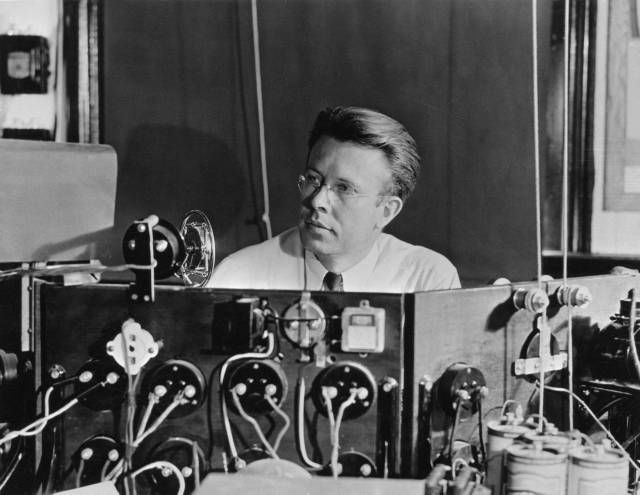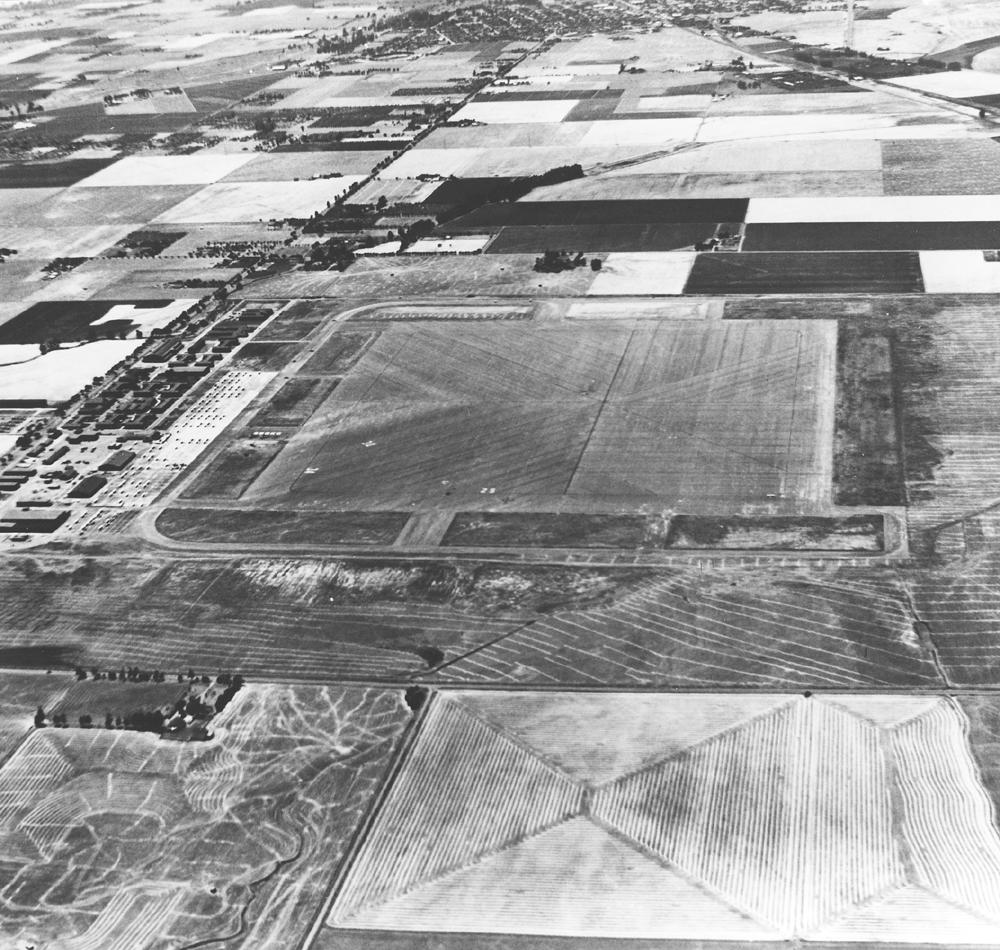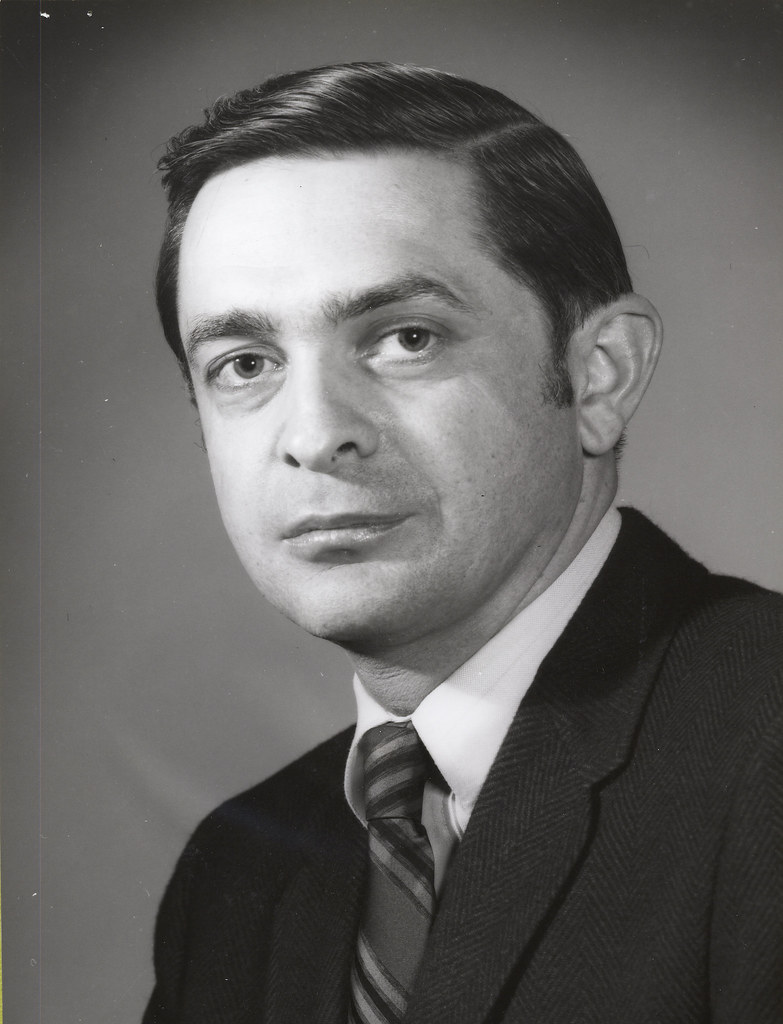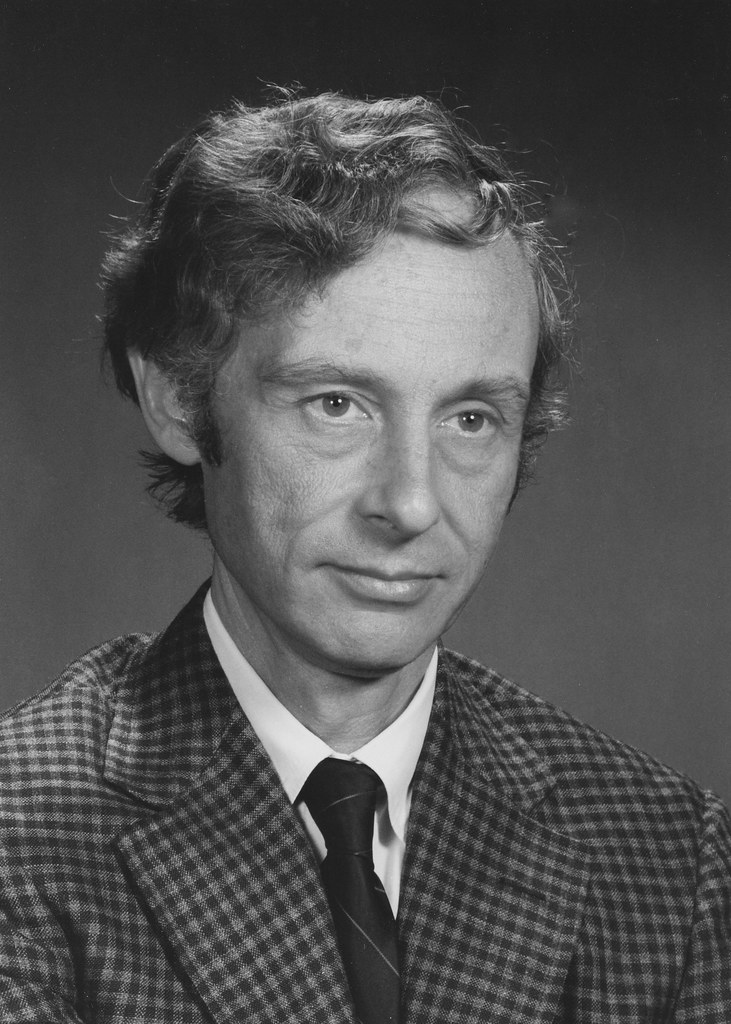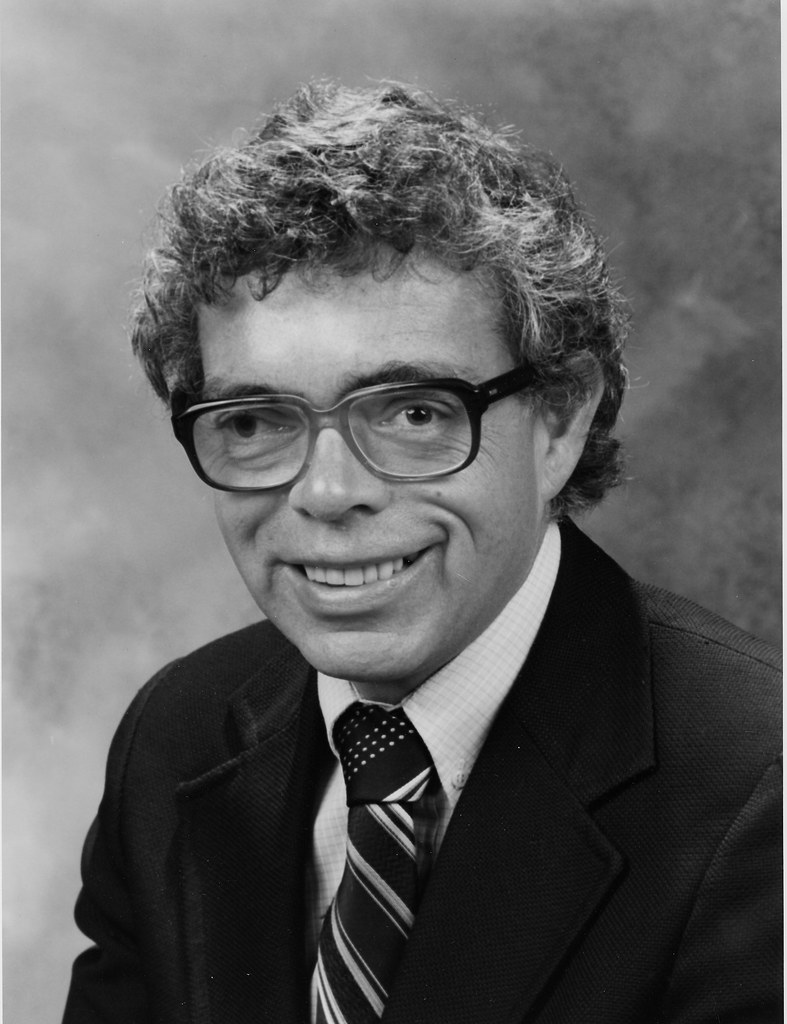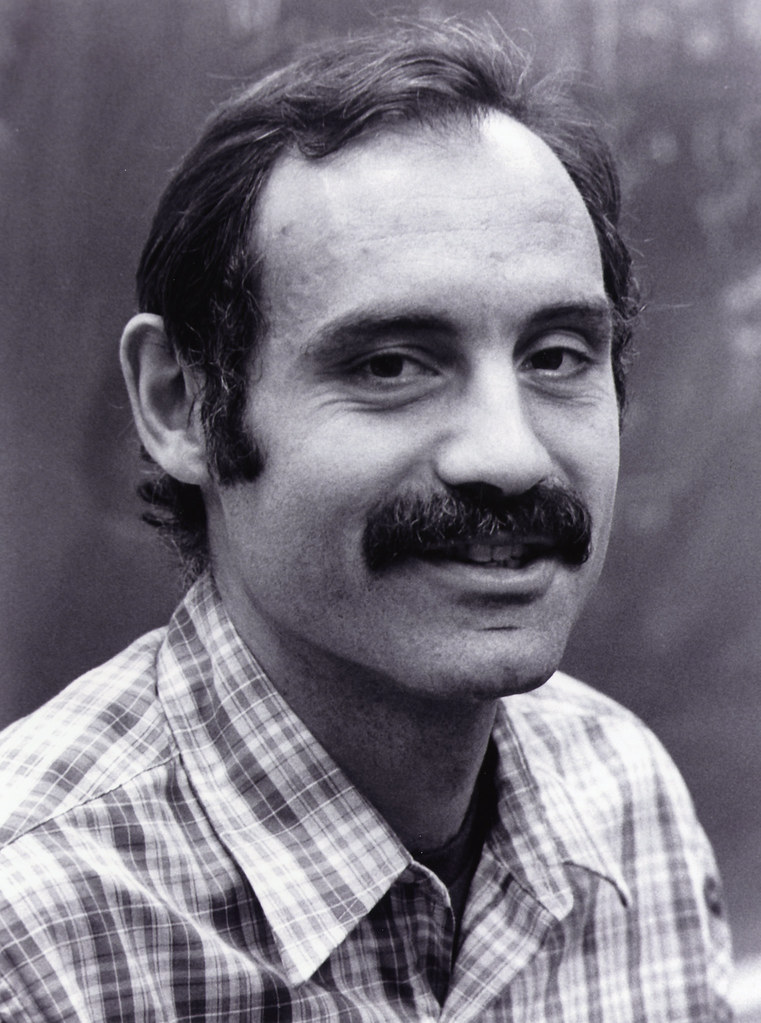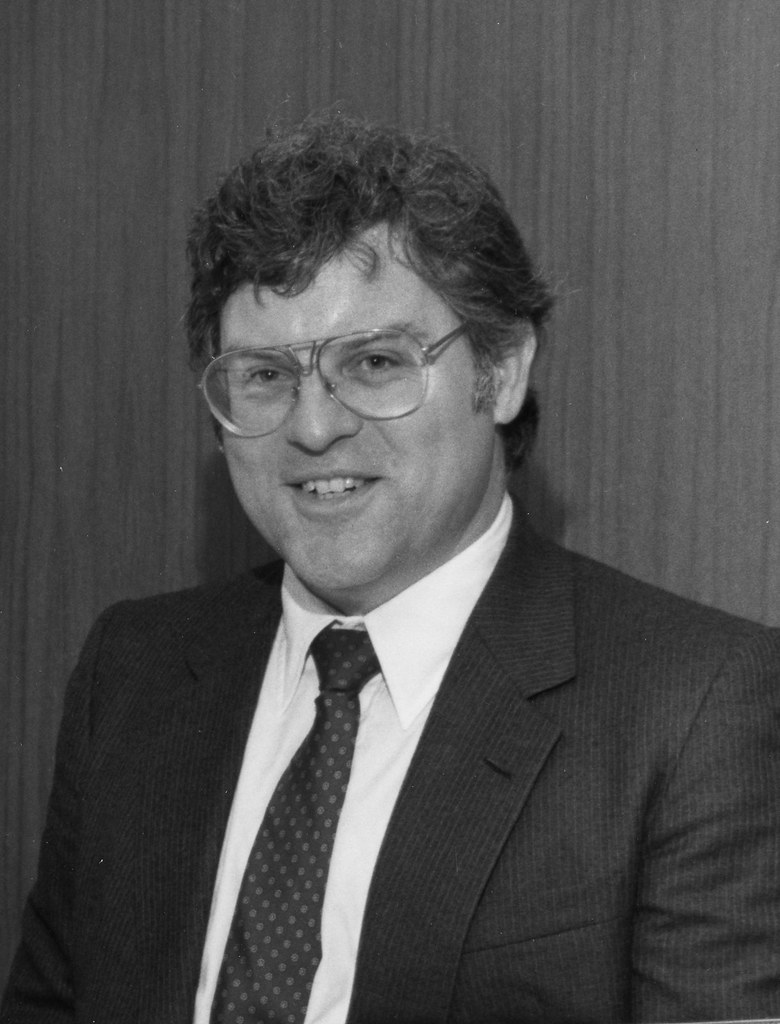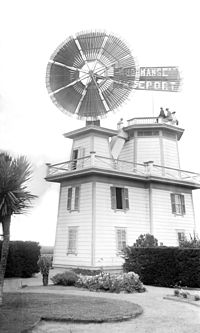Still Working On This Project however due to this important information Up date I will put To the Plates right now the hour of 4:29 AM date stamped 02/23/2016 ~ Title of The Beautiful Mind!!
Water in California
From Wikipedia, the free encyclopedia
California's interconnected water system serves over 30 million people and irrigates over 5,680,000 acres (2,300,000 ha) of farmland. As the world's largest, most productive, and most controversial water system,[1][page needed] it manages over 40,000,000 acre feet (49 km3) of water per year.[2]
Water and water rights are among the state's divisive political issues. Lacking reliable dry season rainfall, water is limited in the most populous U.S. state. An ongoing debate is whether the state should increase the redistribution of water to its large agricultural and urban sectors, or increase conservation and preserve the natural ecosystems of the water sources.
*
Welcome
Thank you for coming to view this timeline of the life of Ernest O. Lawrence, one of the “founding fathers” of Lawrence Livermore National Laboratory. As the Laboratory’s 12th director, I am keenly aware of the intense passion for science and for national security that drove E. O. Lawrence and others as they built the foundations upon which the Laboratory continues to operate to this day. This timeline shows the key milestones in Lawrence’s life, some of the historical events that shaped the world around him, and the achievements with which he responded to those events, including his work in founding and guiding the Laboratory.
—Bill Goldstein
January 2, 1900
Century of Physics
The 20th century—a time of previously unimaginable advancement in physical sciences—became known as the "Century of Physics." At the heart of this progress was the work done by Ernest O. Lawrence and other noted scientists who were instrumental in the founding of Lawrence Livermore National Laboratory.
Tour Lawrence's life with photos and video clips on the timeline or play the entire 58-minute documentary.
August 8, 1901
Ernest O. Lawrence born
Ernest Orlando Lawrence was born in Canton, South Dakota, on August 8, 1901, the first son of Norwegian immigrants.
Ernest O. Lawrence born Canton, South Dakota August 8, 1901
7604800860_29d5ceb4a3_o
Contents
[hide]- 1Sources of water
- 2Uses of water
- 3Water distribution
- 4Planning and management
- 5Natural disasters and California water
- 6Archives relating to California water
- 7See also
- 8References
- 9Bibliography
- 10External links
 LLNLErnest O. Lawrence (1901–1958)
LLNLErnest O. Lawrence (1901–1958)
Founder of Lawrence Livermore National LaboratorAugust 8, 1901 Born Ernest O. LawrenceJanuary 2, 1900 Century of PhysicsJanuary 1, 1905 Ernest as a small childJanuary 1, 1913 A natural-born Tinkerer
Century of Physics
Ernest O. Lawrence born
Ernest Lawrence as a small child ~
A natural-born tinkerer ~
January 1, 1913
A natural-born tinkerer
Ernest Lawrence was nicknamed "Skinny" by his friends.
Inspiration for the cyclotron ~
January 1, 1929
Inspiration for the cyclotron
Ernest O. Lawrence won the Nobel Prize in physics in 1939 for “the invention and development of the cyclotron, and for the results thereby attained, especially with regard to artificial radioelements.”
Because of the war in Europe, the award ceremony was held in Berkeley. He did not deliver his Nobel lecture until December 11, 1951. Ernest Lawrence was inspired to invent the cyclotron with information in a German journal.
Ernest Lawrence demonstrates principle of cyclotron ~
January 1, 1930
Ernest Lawrence demonstrates principle of cyclotron
Using a mechanical model, Ernest Lawrence demonstrates how the cyclotron works.
First successful operation of a cyclotron ~
January 2, 1931
First successful operation of a cyclotron
Ernest O. Lawrence’s first model for his cyclotron was constructed on his kitchen table. A slightly more sophisticated model accelerated ions for the first time in 1931.
Ernest Lawrence marries Mary Kimberly Blumer ~ The Courtship of Molly Lawrence ~ http://www2.lbl.gov/Science-Articles/Archive/Molly-Lawrence-obit.html
|
| Lab Mourns Death of Molly Lawrence, Widow of Ernest O. Lawrence | |
| Contact: Lynn Yarris (510) 486-5375, lcyarris@lbl.gov | |
Cyclotron patented
At the controls
Nobel Prize
News of Nobel Prize celebrated
Future LLNL Site in 1942
Herb York describes work in WWII
Work on particle accelerators continues after war
184-inch cyclotron
Glenn Seaborg describes Ernest O. Lawrence’s character
First Soviet A-bomb
Ernest Lawrence's impact on Edward Teller
John S. Foster, Jr., describes a late-night visit from Ernest O. Lawrence
Ernest Lawrence and the 184-inch cyclotron
Herb York discusses groundwork for Lawrence Livermore Laboratory
Herbert F. York, LLNL Director 1952–1958
Lawrence Livermore Laboratory founded
The beginnings of Lawrence Livermore National Laboratory
LLNL Site 1953
Edward Teller, LLNL Director 1958–1960
The Conference of Experts meets in Geneva during the summer of 1958
Ernest Lawrence died in 1958 at the age of 57
Harold Brown talks about the legacy of Ernest O. Lawrence:
https://www.llnl.gov/archives/ernest-lawrence
Lawrence Award Established:
 https://en.wikipedia.org/wiki/Ernest_Orlando_Lawrence_Award
https://en.wikipedia.org/wiki/Ernest_Orlando_Lawrence_Award
http://science.energy.gov/lawrence/
John S. Foster, Jr. wins Lawrence Award
Harold Brown, LLNL Director 1960-1961
John S. Foster, Jr., LLNL Director 1961-1965
Herbert F. York wins Lawrence Award
Michael M. May, Director 1965-1971
Lawrence Hall of Science, dedicated to the memory of Ernest O. Lawrence
John H. Nuckolls wins Lawrence Award
Michael M. May wins Lawrence Award
Roger E. Batzel, LLNL Director 1971-1988
Thomas E. Wainwright wins Lawrence Award
Seymour Sack wins Lawrence Award
Charles A. McDonald, Jr., wins Lawrence Award
William A. Lokke wins Lawrence Award
John L. Emmett wins Lawrence Award
B. Grant Logan wins Lawrence Award
LLNL Site 1981
Lowell L. Wood wins Lawrence Award
George F. Chapline, Jr., wins Lawrence Award
George B. Zimmerman wins Lawrence Award
Robert B. Laughlin wins Lawrence Award
Peter L. Hagelstein wins Lawrence Award
Thomas A. Weaver wins Lawrence Award
Joe W. Gray wins Lawrence Award
John H. Nuckolls, Director 1988-1994
Wayne J. Shotts wins Lawrence Award
Richard J. Fortner wins Lawrence Award
E. Michael Campbell wins Lawrence Award
John D. Lindl wins Lawrence Award
C. Bruce Tarter, LLNL Director 1994-2002
Charles Roger Alcock wins Lawrence Award
Benjamin D. Santer wins Lawrence Award
Bruce T. Goodwin wins Lawrence Award
Michael R. Anastasio, LLNL Director 2002-2006
Claire E. Max wins Lawrence Award
George H. Miller, LLNL Director 2006-2011
Omar Hurricane wins Lawrence Award
Thomas P. Guilderson wins Lawrence Award
Penrose C. Albright, LLNL Director 2011-
January 1, 1930
Ernest Lawrence demonstrates principle of cyclotron
Using a mechanical model, Ernest Lawrence demonstrates how the cyclotron works.
Atoms Old and New
January 2, 1931
First successful operation of a cyclotron
Ernest O. Lawrence’s first model for his cyclotron was constructed on his kitchen table. A slightly more sophisticated model accelerated ions for the first time in 1931.
April 30, 1932
Ernest Lawrence marries Mary Kimberly Blumer
Atoms Old and New
Molly Lawrence describes her courtship with Ernest O. Lawrence.
LBNL
February 20, 1934
Cyclotron patented
Lawrence's patent for the cyclotron is approved.
January 1, 1938
At the controls
American Institute of Physics
Ernest Lawrence at the controls of the 37-inch cyclotron, circa 1938.
JANUARY 1, 1930
Ernest Lawrence demonstrates principle of cyclotron
JANUARY 1, 1913
A natural-born tinkerer
Century of Physics
Ernest O. Lawrence born
Ernest Lawrence as a small child
A natural-born tinkerer
Inspiration for the cyclotron
Ernest Lawrence demonstrates principle of cyclotron
First successful operation of a cyclotron
Ernest Lawrence marries Mary Kimberly Blumer
Cyclotron patented
At the controls
Nobel Prize
News of Nobel Prize celebrated
Future LLNL Site in 1942
Herb York describes work in WWII
Work on particle accelerators continues after war
184-inch cyclotron
Glenn Seaborg describes Ernest O. Lawrence’s character
First Soviet A-bomb
Ernest Lawrence's impact on Edward Teller
John S. Foster, Jr., describes a late-night visit from Ernest O. Lawrence
Ernest Lawrence and the 184-inch cyclotron
Herb York discusses groundwork for Lawrence Livermore Laboratory
Herbert F. York, LLNL Director 1952–1958
Lawrence Livermore Laboratory founded
The beginnings of Lawrence Livermore National Laboratory
LLNL Site 1953
Edward Teller, LLNL Director 1958–1960
The Conference of Experts meets in Geneva during the summer of 1958
Ernest Lawrence died in 1958 at the age of 57
Harold Brown talks about the legacy of Ernest O. Lawrence
Lawrence Award Established
John S. Foster, Jr. wins Lawrence Award
Harold Brown, LLNL Director 1960-1961
John S. Foster, Jr., LLNL Director 1961-1965
Herbert F. York wins Lawrence Award
Michael M. May, Director 1965-1971
Lawrence Hall of Science, dedicated to the memory of Ernest O. Lawrence
John H. Nuckolls wins Lawrence Award
Michael M. May wins Lawrence Award
Roger E. Batzel, LLNL Director 1971-1988
Thomas E. Wainwright wins Lawrence Award
Seymour Sack wins Lawrence Award
Charles A. McDonald, Jr., wins Lawrence Award
William A. Lokke wins Lawrence Award
John L. Emmett wins Lawrence Award
B. Grant Logan wins Lawrence Award
LLNL Site 1981
Lowell L. Wood wins Lawrence Award
George F. Chapline, Jr., wins Lawrence Award
George B. Zimmerman wins Lawrence Award
Robert B. Laughlin wins Lawrence Award
Peter L. Hagelstein wins Lawrence Award
Thomas A. Weaver wins Lawrence Award
Joe W. Gray wins Lawrence Award
John H. Nuckolls, Director 1988-1994
Wayne J. Shotts wins Lawrence Award
Richard J. Fortner wins Lawrence Award
E. Michael Campbell wins Lawrence Award
John D. Lindl wins Lawrence Award
C. Bruce Tarter, LLNL Director 1994-2002
Charles Roger Alcock wins Lawrence Award
Benjamin D. Santer wins Lawrence Award
Bruce T. Goodwin wins Lawrence Award
Michael R. Anastasio, LLNL Director 2002-2006
Claire E. Max wins Lawrence Award
George H. Miller, LLNL Director 2006-2011
Omar Hurricane wins Lawrence Award
Thomas P. Guilderson wins Lawrence Award
Penrose C. Albright, LLNL Director 2011-
189019001910192019301940195019601970198019902000201020201899190319071911191519191923192719311935193919431947195119551959196319671971197519791983198719911995199920032007201119011905190919131917192119251929193319371941194519491953195719611965196919731977198119851989199319972001200520092013
January 1, 1930
Ernest Lawrence demonstrates principle of cyclotron
Using a mechanical model, Ernest Lawrence demonstrates how the cyclotron works.
Atoms Old and New
January 2, 1931
First successful operation of a cyclotron
Ernest O. Lawrence’s first model for his cyclotron was constructed on his kitchen table. A slightly more sophisticated model accelerated ions for the first time in 1931.
April 30, 1932
Ernest Lawrence marries Mary Kimberly Blumer
Atoms Old and New
Molly Lawrence describes her courtship with Ernest O. Lawrence.
JANUARY 1, 1930
Ernest Lawrence demonstrates principle of cyclotron
JANUARY 1, 1913
A natural-born tinkerer
Century of Physics
Ernest O. Lawrence born
Ernest Lawrence as a small child
A natural-born tinkerer
Inspiration for the cyclotron
Ernest Lawrence demonstrates principle of cyclotron
First successful operation of a cyclotron
Ernest Lawrence marries Mary Kimberly Blumer
Cyclotron patented
At the controls
Nobel Prize
News of Nobel Prize celebrated
Future LLNL Site in 1942
Herb York describes work in WWII
Work on particle accelerators continues after war
184-inch cyclotron
Glenn Seaborg describes Ernest O. Lawrence’s character
First Soviet A-bomb
Ernest Lawrence's impact on Edward Teller
John S. Foster, Jr., describes a late-night visit from Ernest O. Lawrence
Ernest Lawrence and the 184-inch cyclotron
Herb York discusses groundwork for Lawrence Livermore Laboratory
Herbert F. York, LLNL Director 1952–1958
Lawrence Livermore Laboratory founded
The beginnings of Lawrence Livermore National Laboratory
LLNL Site 1953
Edward Teller, LLNL Director 1958–1960
The Conference of Experts meets in Geneva during the summer of 1958
Ernest Lawrence died in 1958 at the age of 57
Harold Brown talks about the legacy of Ernest O. Lawrence
Lawrence Award Established
John S. Foster, Jr. wins Lawrence Award
Harold Brown, LLNL Director 1960-1961
John S. Foster, Jr., LLNL Director 1961-1965
Herbert F. York wins Lawrence Award
Michael M. May, Director 1965-1971
Lawrence Hall of Science, dedicated to the memory of Ernest O. Lawrence
John H. Nuckolls wins Lawrence Award
Michael M. May wins Lawrence Award
Roger E. Batzel, LLNL Director 1971-1988
Thomas E. Wainwright wins Lawrence Award
Seymour Sack wins Lawrence Award
Charles A. McDonald, Jr., wins Lawrence Award
William A. Lokke wins Lawrence Award
John L. Emmett wins Lawrence Award
B. Grant Logan wins Lawrence Award
LLNL Site 1981
Lowell L. Wood wins Lawrence Award
George F. Chapline, Jr., wins Lawrence Award
George B. Zimmerman wins Lawrence Award
Robert B. Laughlin wins Lawrence Award
Peter L. Hagelstein wins Lawrence Award
Thomas A. Weaver wins Lawrence Award
Joe W. Gray wins Lawrence Award
John H. Nuckolls, Director 1988-1994
Wayne J. Shotts wins Lawrence Award
Richard J. Fortner wins Lawrence Award
E. Michael Campbell wins Lawrence Award
John D. Lindl wins Lawrence Award
C. Bruce Tarter, LLNL Director 1994-2002
Charles Roger Alcock wins Lawrence Award
Benjamin D. Santer wins Lawrence Award
Bruce T. Goodwin wins Lawrence Award
Michael R. Anastasio, LLNL Director 2002-2006
Claire E. Max wins Lawrence Award
George H. Miller, LLNL Director 2006-2011
Omar Hurricane wins Lawrence Award
Thomas P. Guilderson wins Lawrence Award
Penrose C. Albright, LLNL Director 2011-
189019001910192019301940195019601970198019902000201020201899190319071911191519191923192719311935193919431947195119551959196319671971197519791983198719911995199920032007201119011905190919131917192119251929193319371941194519491953195719611965196919731977198119851989199319972001200520092013
January 1, 1930
Ernest Lawrence demonstrates principle of cyclotron
Using a mechanical model, Ernest Lawrence demonstrates how the cyclotron works.
Atoms Old and New
January 2, 1931
First successful operation of a cyclotron
Ernest O. Lawrence’s first model for his cyclotron was constructed on his kitchen table. A slightly more sophisticated model accelerated ions for the first time in 1931.
April 30, 1932
Ernest Lawrence marries Mary Kimberly Blumer
Atoms Old and New
Molly Lawrence describes her courtship with Ernest O. Lawrence.
JANUARY 1, 1930
Ernest Lawrence demonstrates principle of cyclotron
JANUARY 1, 1913
A natural-born tinkerer
Century of Physics
Ernest O. Lawrence born
Ernest Lawrence as a small child
A natural-born tinkerer
Inspiration for the cyclotron
Ernest Lawrence demonstrates principle of cyclotron
First successful operation of a cyclotron
Ernest Lawrence marries Mary Kimberly Blumer
Cyclotron patented
At the controls
Nobel Prize
News of Nobel Prize celebrated
Future LLNL Site in 1942
Herb York describes work in WWII
Work on particle accelerators continues after war
184-inch cyclotron
Glenn Seaborg describes Ernest O. Lawrence’s character
First Soviet A-bomb
Ernest Lawrence's impact on Edward Teller
John S. Foster, Jr., describes a late-night visit from Ernest O. Lawrence
Ernest Lawrence and the 184-inch cyclotron
Herb York discusses groundwork for Lawrence Livermore Laboratory
Herbert F. York, LLNL Director 1952–1958
Lawrence Livermore Laboratory founded
The beginnings of Lawrence Livermore National Laboratory
LLNL Site 1953
Edward Teller, LLNL Director 1958–1960
The Conference of Experts meets in Geneva during the summer of 1958
Ernest Lawrence died in 1958 at the age of 57
Harold Brown talks about the legacy of Ernest O. Lawrence
Lawrence Award Established
John S. Foster, Jr. wins Lawrence Award
Harold Brown, LLNL Director 1960-1961
John S. Foster, Jr., LLNL Director 1961-1965
Herbert F. York wins Lawrence Award
Michael M. May, Director 1965-1971
Lawrence Hall of Science, dedicated to the memory of Ernest O. Lawrence
John H. Nuckolls wins Lawrence Award
Michael M. May wins Lawrence Award
Roger E. Batzel, LLNL Director 1971-1988
Thomas E. Wainwright wins Lawrence Award
Seymour Sack wins Lawrence Award
Charles A. McDonald, Jr., wins Lawrence Award
William A. Lokke wins Lawrence Award
John L. Emmett wins Lawrence Award
B. Grant Logan wins Lawrence Award
LLNL Site 1981
Lowell L. Wood wins Lawrence Award
George F. Chapline, Jr., wins Lawrence Award
George B. Zimmerman wins Lawrence Award
Robert B. Laughlin wins Lawrence Award
Peter L. Hagelstein wins Lawrence Award
Thomas A. Weaver wins Lawrence Award
Joe W. Gray wins Lawrence Award
John H. Nuckolls, Director 1988-1994
Wayne J. Shotts wins Lawrence Award
Richard J. Fortner wins Lawrence Award
E. Michael Campbell wins Lawrence Award
John D. Lindl wins Lawrence Award
C. Bruce Tarter, LLNL Director 1994-2002
Charles Roger Alcock wins Lawrence Award
Benjamin D. Santer wins Lawrence Award
Bruce T. Goodwin wins Lawrence Award
Michael R. Anastasio, LLNL Director 2002-2006
Claire E. Max wins Lawrence Award
George H. Miller, LLNL Director 2006-2011
Omar Hurricane wins Lawrence Award
Thomas P. Guilderson wins Lawrence Award
Penrose C. Albright, LLNL Director 2011-
189019001910192019301940195019601970198019902000201020201899190319071911191519191923192719311935193919431947195119551959196319671971197519791983198719911995199920032007201119011905190919131917192119251929193319371941194519491953195719611965196919731977198119851989199319972001200520092013
Sources of water[edit]
California's limited water supply comes from two main sources: surface water, or water that travels or gathers on the ground, like rivers, streams, and lakes; and groundwater, which is water that is pumped out from the ground. California has also begun producing a small amount of desalinated water, water that was once sea water, but has been purified.
Groundwater[edit]
Groundwater is a critical element of the California water supply. During a normal year, 30% of the state's water supply comes from groundwater (underground water). In times of intense drought, groundwater consumption can rise to 60% or more.[3] Over 850,000 acre feet(1.05 km3) of water is stored in California's 450 known groundwater reservoirs.[3] However, not all the water is usable. Over half of the groundwater is unavailable due to poor quality and the high cost of pumping the water from the ground. While surface water is concentrated mostly in the northern part of the state, groundwater is more evenly distributed.[3]
The largest groundwater reservoirs are found in the Central Valley.[3] The majority of the supply there is in the form of runoff that seeps into the aquifer. The freshwater is usually found in deposits of gravel, silt, and sand. Below these deposits lies a layer of deep sediment, a relic of the era when the Pacific Ocean covered the area.
Though California has laws governing surface water usage and quality, there exist no statewide groundwater management laws. Each groundwater basin is individually adjudicated to determine water rights.[4] Otherwise, for all practical purposes, land ownership implicitly carries the right to virtually unlimited groundwater pumping.
The large quantity of water beneath the surface has given rise to the misconception that groundwater is a sort of renewable resource that can be limitlessly tapped. Calculations assuming that groundwater usage is sustainable if the rate of removal equals the rate of recharge are often incorrect as a result of ignoring changes in water consumption and water renewal.[5]
While the volume of groundwater in California is very large, aquifers can be over drafted when groundwater is removed more rapidly than it is replenished. In 1999, it was estimated that the average, annual overdrafting was around 2,200,000 acre feet (2.7 km3) across the state, with 800,000 acre feet (0.99 km3) in the Central Valley.[6] Since then, overdrafting had significantly increased. Satellite measurements found that in just the combined Sacramento and San Joaquin River basins, including the Central Valley, overdrafting between 2011 and 2014 was 12,000,000 acre feet (15 km3) of water per year.[7]
Surface water[edit]
California has ten major drainage basins defined for convenience of water management. These basins are divided from one another by the crests of mountains. From north to south the basins are: North Coast, Sacramento River, North Lahontan, San Francisco Bay, San Joaquin River, Central Coast, Tulare Lake, South Lahontan, South Coast, and Colorado River regions. Each region incorporateswatersheds from many rivers of similar clime.
| Hydrologic region | Annual precipitation | Annual runoff |
|---|---|---|
| North Coast | 55,900,000 acre feet (69.0 km3) | 28,900,000 acre feet (35.6 km3) |
| Sacramento River | 52,400,000 acre feet (64.6 km3) | 22,400,000 acre feet (27.6 km3) |
| North Lahontan | 6,000,000 acre feet (7.4 km3) | 1,900,000 acre feet (2.3 km3) |
| San Francisco Bay | 5,500,000 acre feet (6.8 km3) | 1,200,000 acre feet (1.5 km3) |
| San Joaquin River | 21,800,000 acre feet (26.9 km3) | 7,900,000 acre feet (9.7 km3) |
| Central Coast | 12,300,000 acre feet (15.2 km3) | 2,500,000 acre feet (3.1 km3) |
| Tulare Lake | 13,900,000 acre feet (17.1 km3) | 3,300,000 acre feet (4.1 km3) |
| South Lahontan | 9,300,000 acre feet (11.5 km3) | 1,300,000 acre feet (1.6 km3) |
| South Coast | 10,800,000 acre feet (13.3 km3) | 1,200,000 acre feet (1.5 km3) |
| Colorado River | 4,300,000 acre feet (5.3 km3) | 200,000 acre feet (0.25 km3) |
Rain and snowfall[edit]
Rain typically falls in California only during the winter and spring months, from October through May, with more rain falling on the northern half of the state than the southern. The summers are dry throughout the state. Precipitation falling as snow in the Sierra and other mountain ranges feeds the network of reservoirs and surface water sources that supply the state; a dry rainfall or light snowfall year can result in drought.
California precipitation and snowpack is measured by the state of California by "water year", which runs from October 1 to September 30.[9]
Uses of water[edit]
| This section needs additional citations for verification. (October 2014) |
Water use in California is divided into approximately 51% for environmental uses, 39% agricultural use and 11% urban uses, though that varies considerably between regions and between wet and dry years.[10] Solely relying on these statewide volumes is controversial because they don't consider the fact that most of the volume of water used for environmental purposes includes flows down Wild and Scenic Rivers in the North Coast where there is no practical way to recover it for either agricultural or urban use because it lacks many connections to the statewide water supply system.[11] It also doesn't factor in the amount of water required to keep salty water from the Pacific Ocean from intruding into the Delta beyond a certain small concentration.[11] Otherwise, "reduced water quality resulting from large amounts of salt water drawn into the Delta could shut down the export pumps that supply fresh water to agriculture and cities." [12][13]
Around 75% of California's water supply comes from north of Sacramento, while 80% of the water demand occurs in the southern two-thirds of the state.[14] The Sacramento-San Joaquin River Delta Estuary located between San Francisco Bay and Sacramento receives about 40% of California's total precipitation and 50% of its total streamflow. It is a critical hub used by the federal Central Valley Projectand California State Water Project to connect water collected and stored in the north regions of the state with aqueducts and canals that transport it to users in the North Bay, South Bay, East Bay, and Greater Southern California. In a typical year, about 10.8 million acre-feet are exported from the Delta: 67% is delivered by the Central Valley Project, 26% by the State Water Project and the remainder to other federal water project users.[15] Those flows are greatly reduced in drought years. About 16.5 million acre-feet of water entering the Delta in a typical year flows through the Delta into San Francisco Bay, including 6.3 million acre-feet in governmentally mandated environmental flows; 22.4 million acre-feet is used for other environmental purposes, and 1.6 million acre-feet supplies water to managed wetlands and wildlife preserves.[16]
Agricultural[edit]
In an average year, about 39% of California's water consumption, or 34.1 million acre-feet, is used for agricultural purposes. Of that total, 10.8%, or 8.9 million acre-feet is not consumed by the farms for crop production but is instead recycled and reused by other water users, including environmental use, urban use, and agricultural use, yielding net water consumption for food and fiber production equal to 28.2% of California's water consumption, or 25.2 million acre-feet.[16] This water irrigates almost 29 million acres (120,000 km2), which grows 350 different crops. Agricultural water usage varies depending on the amount of rainfall each year.
Alfalfa uses about 18% of California irrigation water and produces 4% of California's farm-gate revenue, most of which is used as livestock feed. In 2012, California exported 575,000 tons of alfalfa to China, for $586 million.[17] Other common crop water use, if using all irrigated water: fruits and nuts with 34% of water use and 45% of revenue, field crops with 14% of water and 4% of revenue, pasture forage with 11% of water use and 1% of revenue, rice with 8% of water use and 2% of revenue (despite its lack of water, California grows nearly 5 billion pounds of rice per year, and is the second largest rice-growing state [18][19]), and truck farming of vegetables and nursery crops with 4% of water use and 42% of revenue; head of broccoli: 5.4 gallons; one walnut: 4.9 gallons; head of lettuce: 3.5 gallons; one tomato: 3.3 gallons; one almond 1.1 gallon; one pistachio: 0.75 gallon; one strawberry 0.4 gallon; one grape: 0.3 gallon.[20][21]
Horses, based on the amount of alfalfa they eat, use about 1.9 million acre feet of water—about 7% of irrigated water in the state. There are 698,000 horses in California.[22]
Cheap agricultural water paired with a mild climate has allowed farmers to produce widely in California. Jane Dye Gussow discusses California's agricultural water in her bookThis Organic Life. She argues the farms that use precious water in California produces food in an area that "was never intended to be a garden." [23] The Central Valley, or the breadbasket of California where the majority of this agricultural water is used, is the most threatened agricultural land in the nation. The current water crisis raises the question, should California's water be used on agriculture if certain crops can be grown elsewhere?[POV? ]
Urban/residential[edit]
Urban and industrial use of water consumes about 10.8%, or 8.9 million acre-feet, of total water consumption in an average year.[16] A 2011 study of a sampling of 735 California homes across ten water districts found that the weighted average annual total water use of these homes was 132,000 US gallons (0.41 acre·ft) per year or 362 US gallons (0.00111 acre·ft) per household per day.[24] To put that in perspective, the typical office water cooler holds 5 US gallons (1.5×10−5 acre·ft), or about 1.4% of the study's estimated daily average household use. The study found that about 53% of total average household water use, or more than 192 US gallons (0.00059 acre·ft) per household per day, was used for landscaping and other outdoor uses Meanwhile, indoor use accounted for more than 170 US gallons (0.00052 acre·ft) per household per day. The most in-home water consumption is toilet flushes, using 20% of the water. After toilets, 20% is used for showers and 18% goes to leaks inside homes.[25]
In Sacramento, in 2012 before the severe drought started, residents were using 217 US gallons (0.00067 acre·ft) a day per-capita.[26] Many homes in Sacramento didn't have water meters until recently. They now are gradually being installed after former Gov. Arnold Schwarzenegger signed a 2004 law mandating meters statewide by 2025.[27]
After Folsom, a city of 72,000 east of Sacramento, installed meters in 2011 and adopted tiered rates that charge more for people who consume the most water, per-capita use started falling steadily.[27]
Water distribution[edit]
There are six main systems of aqueducts and infrastructure that redistribute and transport water in California: the State Water Project, the Central Valley Project, several Colorado River delivery systems, the Los Angeles Aqueduct, the Tuolumne River/Hetch Hetchy system, and the Mokelumne Aqueduct.
The State Water Project[edit]
See also: California State Water Project and California Aqueduct
The California State Water Project is the largest multipurpose, state-built water project in the United States.[28] The SWP transports water from the Feather River watershed to agriculture, and some of the water goes to industrial and urban users. More than two-thirds of Californians receive some water from the SWP. The system was designed and contracted to deliver 4,200,000 acre feet (5.2 km3), but in an average year delivers only 2,300,000 acre feet (2.8 km3) because many of the original planned features were never built.[8] Twenty-nine agencies hold contracts for SWP water. The contractors pay for SWP's major operating costs and have gradually reduced the $1.75 billion bond debt that supplied funds for initial construction. In the years since 1960, SWP has built 29 dams, 18 pumping plants, fivehydroelectric power plants, and around 600 miles (970 km) of canals and pipelines.[29]
The SWP system begins with reservoirs on upper tributaries of the Feather River. Oroville Dam creates the largest SWP reservoir. At 770 feet (230 m) above the riverbed, the dam is the tallest in the United States. The reservoir covers 15,000 acres (61 km2) and holds 3,500,000 acre feet (4.3 km3).[30] Water travels from Lake Oroville to the Sacramento River. At Harvey O. Banks Delta Pumping Plant, which pulls SWP water into the Bethany Reservoir, around 2,200,000 acre feet (2.7 km3) are extracted from the Delta each year.[31] Water that flows to the south end of the San Joaquin Valley must be pumped over the Tehachapi Mountains. Because of this, the SWP is California's largest energy consumer, and even though the hydroelectric plants of the SWP generate 5,900 GWh per year, that is only a fraction of the energy needed to lift water over the Tehachapis.[32] Below the Tehachapis the California Aqueduct splits, with the west branch storing water in Castaic and Pyramid Lake, and the east branch storing water in the Silverwood Lake reservoir.
The Central Valley Project[edit]
The CVP's original purpose was to tame seasonal flooding and to direct water to the south to irrigate 3 million acres (12,000 km2) of farmland. The CVP is operated by the United States Bureau of Reclamation. As one of the largest water systems in the world it stores over 7,000,000 acre feet (8.6 km3) of water, or 17 percent of the state's developed water.[33] The CVP dams and diverts five major rivers: theTrinity, the Sacramento, the American, the Stanislaus, and the San Joaquin. Friant Dam, on the San Joaquin, was completed in 1944, forming Millerton Lake. This was one of 20 reservoirs in the CVP. Shasta Dam, the largest CVP storage facility, was completed in 1945. At Sacramento, American River water stored by Folsom Dam is added. 2,500,000 acre feet (3.1 km3) are annually pumped from the Deltainto the Delta-Mendota Canal. New Melones Dam on the Stanislaus River was finished in 1979, and the reservoir was filled in 1982.
The CVP has generated some controversy about environmental damage, prices charged to farmers, and lax enforcement of farm size limitations. Bureau of Reclamation water was supposed to be used for farms limited to 160 acres (see Homestead Act). Under Spanish and Mexican land grants, however, there were only a few land owners, all of whom owned large tracts of land. A 1982 reform increased CVP area limits to 960 acres (3.9 km2).[34] In 1992, the Central Valley Project Improvement Act made fish and wildlife protection and restoration an authorized purpose of the CVP on an equal footing with other authorized purposes. 800,000 acre feet(0.99 km3) of annual runoff were dedicated to environmental usage, which generated intense controversy.[35]
Colorado River Systems[edit]
The Colorado River is the source of 4,400,000 acre feet (5.4 km3) per year for California.[36] Six other states along the river's watershed (Wyoming, Nevada, Utah, Colorado, New Mexico, and Arizona) and Mexico, share allocated portions of river water. The Metropolitan Water District of Southern California, or MWD, holds priority water rights on the Colorado. It sells water to 95 percent of the South Coast region. Lake Mead, formed by Hoover Dam, is the primary reservoir in the Colorado River basin. The Colorado River Aqueduct begins 155 miles (249 km) downstream from Hoover Dam, and can carry 1,200,000 acre feet (1.5 km3) annually.
An additional system diverts water from the Colorado River at the Imperial Diversion Dam provides waters to the Imperial and Coachella valleys as well as Yuma, Arizona, via theAlamo Canal, the Coachella Canal and the All-American Canal, which runs alongside the Mexican border. This system was also responsible for the accidental re-creation of theSalton Sea in 1905.
The Colorado is often over allocated, because apportionments were made on inaccurate measurements of annual runoff. Marc Reisner in Cadillac Desert noted that the Colorado is "unable to satisfy all the demands on it, so it is referred to as a 'deficit' river, as if the river were somehow at fault for its overuse".[37] For years California took more than its share of the apportionment, because other states were not prepared to use their entire allotments. MWD became used to 800,000 acre feet (0.99 km3) excess of water. Pressure from other Colorado river states caused the Secretary of the Interior to order California to show progress towards decreasing its dependency on the excess 800,000acre feet (0.99 km3), or face cuts.[38] The Colorado River Water Use Plan called for Imperial and Coachella Valley agriculture to give up water in order to reallocate 800,000 acre feet (0.99 km3) within the state. The plan's proposals generated much controversy, and the deadline arrived with no agreement reached. The Department of the Interior reduced MWD's access by 415,000 acre feet (0.512 km3).
The Los Angeles Aqueduct[edit]
Main article: Los Angeles Aqueduct
The Los Angeles Aqueduct carries water from the Eastern Sierra Nevada to Los Angeles. The construction of the aqueduct marked the first major water delivery project in California. The city purchased 300,000 acres (1,200 km2) of land in the Owens Valley in order to gain access to water rights. The Los Angeles Department of Water and Power transports 400,000 acre feet (0.49 km3) of Eastern Sierra Nevada water to the city each year. This growth clearly shows William Mulholland's observation that "Whoever brings the water, brings the people."[39]
After four decades of diversion from the Mono Lake area, environmental damage created an environmental battle in the 1980s, with a victory for the Mono Lake proponents in 1994.[40] Other problems arose when dust from the bed of Owens Lake (completely dried up by diversions) became a major source of air pollution in the southern Owens Valley. To restore Mono Lake, correct air-quality law violations, and rewater portions of the Owens River, Los Angeles has begun to reduce its dependence on Eastern Sierra Nevada water. This has mostly been achieved through water conservation. The city enacted a program offering free low-flow toilets to its customers.[41]
Hetch Hetchy Aqueduct[edit]
The Hetch Hetchy Aqueduct carries water from the Tuolumne River to San Francisco and other Bay Area regions. The system starts inHetch Hetchy Valley, inside Yosemite National Park. The system also generates electricity, which is a major source of revenue for San Francisco.[citation needed] After water leaves Hetch Hetchy, it passes through tunnels towards powerhouses. Three pipes then bring the water across the Central Valley. Concerns about the Hetch Hetchy Aqueduct's ability to withstand earthquakes led to a $1.7 billion bond, approved by voters in November 2002.[42]
Mokelumne Aqueduct[edit]
Main article: Mokelumne Aqueduct
The East Bay Municipal Utility District (EBMUD) serves 35 communities in Alameda and Contra Costa Counties, including Berkeley and Oakland. The Mokelumne River in the central Sierra Nevada is the source for almost all of EBMUD's water. EBMUD built the Pardee Dam across the Mokelumne in the foothills northeast of Stockton. South of Pardee is Camanche Reservoir, which regulates releases to serve downstream water rights holders. EBMUD holds almost 30,000 acres (120 km2) in the Mokulumne River watershed and 25,000 acres (100 km2) in other watersheds. EBMUD also has an American River water right that could be sent to the Mokelumne Aqueduct through the Folsom South Canal. The only time this has been done was during the drought years of 1977-78, when the water was actually pumped from the Delta.[8] This generated controversy, as EBMUD preferred the cleaner water from the American River, but environmentalists and Sacramento had concerns about the impacts such a diversion would have on the river. The legal battle led to affirmation of EBMUD's water right, but modifications were also negotiated. The intake point was moved downstream, to maintain minimum flows in the American River before it merges with the Sacramento.
North Bay[edit]
The North Bay Aqueduct of the California State Water Project delivers an annual average of 39,309 acre-feet of water to urban communities and agricultural users in Napa, Solano, Sonoma and Marin counties. That water is diverted from the Sacramento-San Joaquin River Delta Estuary, a water hub that serves as the junction of south-, west, and north-flowing rivers draining the Cascade and Sierra Nevada mountain ranges.
Certain municipalities north of San Francisco Bay, including Santa Rosa and Petaluma, are served by the Sonoma County Water Agency. Their primary water source is theRussian River. However, it must be noted that the Russian River owes its summer flow in large part to the Eel, which is bled off via a tunnel into Potter Valley (via the Potter Valley Project) and flows to a reservoir near Ukiah, Lake Mendocino. PG&E now owns the rights to this delivery system, as well as the long controversial history. There are many[who?]along the Eel who would like their water back.
The cities of Vallejo, Fairfield, and Vacaville are served by the Solano County Water Agency, which transports water from Lake Berryessa and moves it south along the Putah South Canal. Marin County has the Marin Municipal Water District and the North Marin Water District.
Planning and management[edit]
The planning and management of water in California is subject to a vast number of laws, regulations, management plans, and historic water rights.
The California state agency responsible for water planning is the California Department of Water Resources.
California water plans[edit]
There have been several documents known as the "California Water Plan", with the most recent being published in 2013.[43] Before the state of California started drafting comprehensive plans for the management of water in the state, the earliest plan for water distribution in California was an 1873 report. This was followed by a 1919 report called "Irrigation of Twelve Million Acres in the Valley of California". The 1919 report is this first comprehensive plan, and is often called the "Marshall Plan", after its author Col. Robert Bradford Marshall. There have been many subsequent water plans and water plan updates, which were often issued as California Department of Water Resources bulletins.[44]California Water Code provides guidance or the plan updates.[45] Beginning in 1957, early Water Plan Updates were largely technical and focused on water supply development. Plans gradually became more comprehensive to address the state's growing conflicts over limited resources. Updates now present the status and trends of California's water-dependent natural resources; water supplies; and agricultural, urban, and environmental water demands for a range of plausible future scenarios. They also evaluate different combinations of regional and statewide resource management strategies to reduce water demand, increase water supply, reduce flood risk, improve water quality, and enhance environmental and resource stewardship. The evaluations and assessments performed for the updates help identify effective actions and policies for meeting California's resource management objectives in the near term and for several decades to come.
Since 2000, another major goal for each update has been to receive broad input and support from Californians. Preparation of these new millennial Water Plan updates has been widely viewed as exceptionally transparent and collaborative as the consensus seeking process is routinely cited by other agencies and states as a model for policy planning efforts.[46] The approach involves: interest based dialog and exchange among teams, committees and the public to develop work products; multiple opportunities for review by different audiences; and integration and reconciliation of feedback from a variety of perspectives.
Update 2013 leverages the clear guidance Governor Edmund G. Brown Jr. (Jerry Brown) forged with his California Water Action Plan.[47] That five-year plan, released in January 2014, outlines a succinct set of actions that together bring reliability, restoration, and resilience to California water resources, even as the state's population is expected to grow from 38 million to 50 million by 2049.
Three related themes distinguish Update 2013 from Update 2009. The five year time span reinforced the value of integrated water management, and Update 2013 closely examines the practices and policies that allow water managers to combine flood management, environmental stewardship, and surface water and groundwater supply actions to deliver multiple benefits across a region. Fundamental to that integrated approach is better alignment in the management of data, planning, policy-making, and regulation across local, State, tribal, and federal governments.
With water within the state of California becoming a growing issue, new developments in desalination plants have been developed. In fact, according to San Diego County Water Authority, a major desalination plant is already underway to begin construction. The plant will help the county with its rapidly growing problem, and though the plant isn't enough to fix the problem as a whole, it's quite the start for the county. Also, the water agreement between San Diego County, and the private organization who is developing this plant, will be on a 30-year lease. After the 30 years have passed, the desalination plant will be available for the county to purchase for a very low price, which will make the water cleansing a local responsibility. This will give the federal government more funds and time to focus on other opportunities in finding a solution for the state's water depletion.[citation needed]
Water rights[edit]
On more than one occasion, the California Supreme Court has noted that "the scope and technical complexity of issues concerning water resource management are unequaled by virtually any other type of activity presented to the courts."[48][49] An example of this complexity is demonstrated in the case of National Audubon Society v. Superior Court.
Water rights are divided in multiple ways. Water rights to surface water and underground sources are separate. Also, California recognizes four distinct types of water rights to surface water in its statutory and common law: pueblo, riparian, prior appropriation, and water reserved by the USA. A fifth statutory right also provides area of origin watershed rights.[citation needed]
Pueblo water rights[edit]
California recognizes water rights granted to pueblos (settlements) under the Spanish and Mexican governments, prior to the Treaty of Guadalupe Hidalgo.[50][51] Under the doctrine, pueblos organized under the laws of Mexico or Spain have a water right to the yield of all streams and rivers flowing through the city and the groundwater aquifers lying below.[52] Pueblo water rights are superior to all riparian and appropriative rights and cannot be lost by a failure to assert an interest or use the water.[53] In addition, the pueblo's claim expands with the needs of the city and may be used to supply the needs of areas that are later annexed to the city.[53] Los Angeles and San Diego are the only original pueblos to exercise their pueblo water rights in the courts.
Pueblo water rights are controversial. Some modern scholars and courts argue that the pueblo water rights doctrine lacks a historical basis in Spanish or Mexican water law.[54]
Riparian water rights[edit]
Under the riparian doctrine, "the owner of land has the right to divert the water flowing by his land for use upon his land, without regard to the extent of such use or priority in time".[55] "Riparians on a stream system are vested with a common ownership such that in times of water shortage all riparians must reduce their usage proportionately."[56]
Riparian water rights were inherited from the common law of England.[57] Under the doctrine, appurtenant property owners have correlative rights to the reasonable use of the water passing through their land. The right is part and parcel with the land itself and, in California, only accompanies those tracts that have always directly touched the water.[58]
The English focus on landownership differs sharply from the "first in time, first in right" approach 49ers, who were generally trespassing on federal land, developed to wash hills into rivers.[59] In Lux v. Haggin (1886) the California Supreme Court resolved the conflict by finding that riparian water rights are superior even to older prior appropriations. When in 1926 the Court went so far as to find that riparian owners did not need to put their water to beneficial use, the People amended the California Constitution to reverse the decision, establishing that no water in the state may be wasted.[60]
While riparian rights are superior to appropriative rights and may survive dormant and unused, in 1979 the California Supreme Court found that the California State Water Resources Control Board has the power to assign unused riparian rights lower priority than existing prior appropriations.[61]
Water rights by prior appropriation[edit]
"The appropriation doctrine confers upon one who actually diverts and uses water the right to do so provided that the water is used for reasonable and beneficial uses," regardless of whether that person owns land contiguous to the watercourse.[56] In addition, all appropriative rights are subordinate to riparians or earlier appropriators.[56] In times of shortage riparians are entitled to fulfill their needs before appropriators are entitled to any use of the water.[62] "And, as between appropriators, the rule of priority is 'first in time, first in right.'"[63] Beginning in 1914, a statutory scheme has provided the exclusive method of acquiring appropriation rights through the California State Water Resources Control Board.[64] The modern system of prior appropriation water rights followed by California is characterized by five principles:
- Exclusive right is given to the original appropriator, and all following rights are conditional upon precedent rights.
- All rights are conditional upon beneficial use.
- Water may be used on riparian lands or non-riparian lands (i.e. water may be used on the land next to the water source, or on land removed from the water source)
- Diversion is permitted, regardless of the shrinkage of the river or stream.
- The right may be lost through non-use.[65]
Beneficial use is defined as agricultural, industrial, or urban use. Environmental uses, such as maintaining body of water and the wildlife that use it, were not initially regarded as beneficial uses in some states but have been accepted in some areas.[66] Every water right is parameterized by an annual yield and an appropriation date. When a water right is sold, it maintains its original appropriation date.
Water reserved by the United States[edit]
Lands reserved by the United States government are accompanied by a corresponding reservation of water rights for as much water is needed to fulfill the purpose for which the reservation was made. Such reservations were made on behalf of Native American tribes, national parks, monuments and forests.[67][67][68][69] Water rights reserved by the United States are defined by and controlled by federal law. And because reserved water rights are not riparian nor appropriative, they may conflict with state law.[67]
Area of origin watershed rights[edit]
California provides communities and other water users within watersheds senior status over appropriative water rights in limited circumstances.[70]
Area of origin water rights parallel pueblo water rights. In both cases, water is reserved for future growth of the local community. In other words, appropriations may be subject to a water rights claim from people/government in the area of origin. That later claim would be senior despite its temporal disconnect. As a result of its pueblo rights, Los Angeles has rights to all or almost all water from the Los Angeles River.[which?] In the same way, communities along major water sources such as the Sacramento River theoretically have senior water rights to support growth despite a downstream user holding otherwise senior appropriative water rights.[citation needed]
Area of origin laws were passed in reaction to the controversies related to Los Angeles diverting water from the Owens Valley.[citation needed] Despite being on the books for generations, the area of origin statutes were not used until 2000. In addition, there currently are no court opinions regarding area of origin watershed rights.[citation needed]
Adjudication[edit]
Since under the law, landowners can extract as much groundwater from their property as they can put to beneficial use, adjudication was used to determine who had the right to pump how much and to audit such usage.[71] The courts appoint water masters to audit usage and otherwise enforce water rights, who are often management boards, the federalUnited States Department of the Interior, the California Department of Water Resources, or an individual.[71][72][73]
Disputes and controversies[edit]
The California Water Wars, a struggle between Los Angeles and certain parties within the Owens Valley, for water rights is but one of examples of the alleged wrongdoings of municipalities and people in securing adequate water supplies. The city of Los Angeles bought 300,000 acres (1,200 km2) of land from residents of the Owens Valley and the water rights attached with them, for a fair price. The diverting of this water from the valley, it is alleged, transformed it from an agricultural valley into a dust bowl.[37]
The electricity produced by the hydroelectric plants drawing their water from the Hetch Hetchy reservoir became the subject of controversy when it was reported by the San Francisco Bay Guardian that the city of San Francisco sold roughly 500 megawatts of power to the PG&E,[74] supposedly in violation of the Raker Act, which specifies that because the source of water and power was on public land, no private profit could be gained from such sales. Whether or not the Raker Act is indeed being violated is still a matter of controversy.
The creation of so many dams in California in order to enact a pragmatic water supply program has been met with criticism from some environmentalists,[which?] who have decried the negative effects of dams on ecosystems, particularly on migratory fish populations.[75]
Predicted need for increased water supplies[edit]
| This section's factual accuracy may be compromised due to out-of-date information. (May 2013) |
It is projected that California's population will be almost 50 million people in the year 2020.[76] If the prediction comes true and there is no action to increase the water supply, the difference between water demand and supply would be between 2,000,000 and 6,000,000 acre feet (7.4 km3) in the year 2020.[77] Over the past five years California voters have approved $3 billion in bonds for water development and management. Many of these projects are incorporated in the CALFED Bay-Delta program, a federal-state program designed to reduce water supply conflicts. In August 2000 the state and federal governments approved the CALFED plan for water quality, water conservation and recycling, watershed administration, ecosystem re-establishment, delta levees, surface and groundwater storage, water transportation, and science. The plan has a thirty-year implementation period and designed to incorporate changes in conditions and knowledge about the effects of specific projects. Stage 1 was initiated in 2000 and was designed as a seven-year program. The cost is estimated to be $8.7 billion.[78] Stage 1 water yield within the next seven to ten years is estimated to be 2,900,000 acre feet (3.6 km3) per year.[77] As part of Stage 1, an Environmental Water Account was established through the purchase of 350,000 acre feet (0.43 km3) of water. The EWA is used to protect fish and other wildlife without reducing water allocations to farms and municipalities.
A $7.5 billion water bond was approved in November 2014 with a 2 to 1 ratio.[79] The bond-financing has been contentiously debated by the legislature and Governor Jerry Brown for the past few years, was said to improve the water quality, supply and infrastructure, if passed by voters.[80]
Natural disasters and California water[edit]
Major droughts in California history since 1900[edit]
See also: California drought
Archives relating to California water[edit]
The California Water Documents collection in the Claremont Colleges Digital Library is a valuable online resource of archived materials related to California's water history. Topics encompassed in the collection include: water quality, flood control, water distribution, water conservation, water usage, drought, and geology.[83] Additionally, the collection has digitized materials relating to the creation and operation of both the Central Valley Project and the California State Water Project as well as their component units.[83] The items represented in the Claremont Colleges Digital Library are part of a larger collection entitled the Water Resources Collection in Special Collections at Claremont Colleges' Honnold/Mudd Library. The Water Resources Collection was started in the 1930s by Librarian Willis Holmes Kerr and Librarian and Claremont Colleges' Trustee John Treanor.[84] These librarians' interest in California's water problem led them to start collecting a variety of documents related to water history and usage from around the state. It includes reports of engineers, annual reports and minute books of boards of directors of water companies, documents of federal and state governments, promotional pamphlets, and newspaper clippings.[84] Most of the documents focus on the water history from the first half of the 20th century, but there are additional, more recent publications included, which have been donated by Claremont Graduate University Professor Merrill Goodall.[84] The California Water Documents collection is currently a work in progress at the Claremont Colleges Digital Library.
The Water Resources Collections and Archives is located at the University of California, Riverside and features a comprehensive collection of water-resource related documents.




